
Key Points
- The mostly gloomy debate around the Australian economy often gives the impression we are in constant state of crisis.
- But economic growth is pretty good, the economy has rebalanced without the (“inevitable”) recession, the worst of the mining bust looks to be behind us, public infrastructure spending is ramping up, consumer and business confidence are around long term averages, share market profits have likely bottomed and Australia stacks up well on social considerations.
- These are all reasons to be reasonably optimistic about the Australian economy and Australian assets. There are in fact several reasons for optimism on Australia.
- First, economic growth is pretty good. With the economy expanding 3.1% over the year to the March quarter and looking similar for the June quarter. This is in line with Australia’s long term average. It’s also way above most other advanced countries. Latest annual GDP growth rates are 1.2% in the US, 1.6% in the Eurozone and 0.6% in Japan. Of course I could add that the economy hasn’t had a recession in over 25 years, but that one gets a bit overdone and owes a little bit to luck with statistics!
- Second, the economy has rebalanced. The slump in mining investment and national income due to the collapse in our export prices has been offset by a surge in housing construction, solid consumer spending, a pick-up in services exports and a surge in resource export volumes.
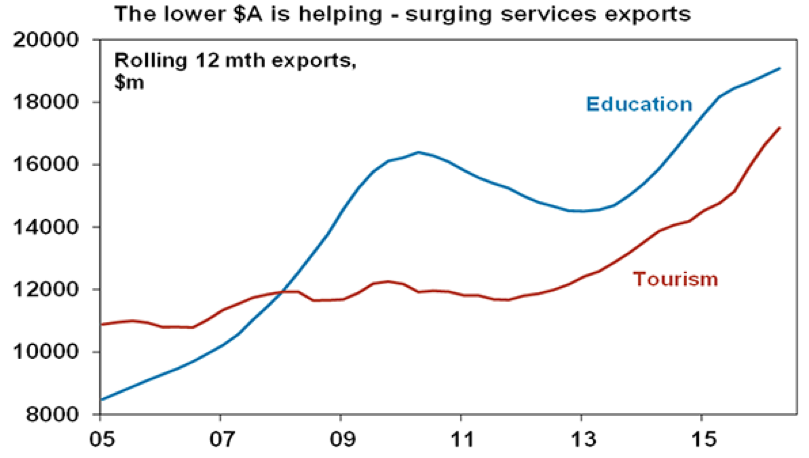
As a result of all this, post mining boom weakness in WA & NT is being offset by strength in NSW and Victoria as the much talked about two speed economy has just reversed.
Source: ABS, AMP Capital
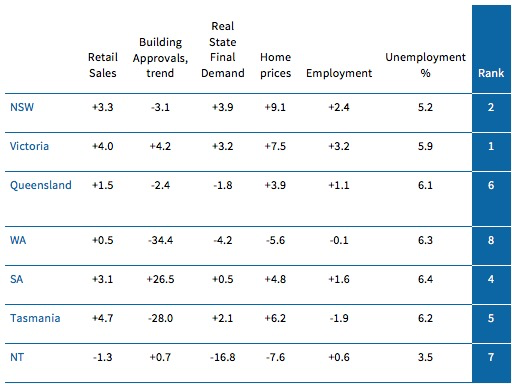
State of the states, annual % change to latest
The bottom line is that the recession many said was inevitable as a result of the mining bust hasn’t happened.
Source: ABS, CoreLogic, AMP Capital
Third, the worst of the slump in commodity prices and mining investment looks to be behind us. After sharp falls from their highs around the turn of the decade global prices for iron ore, metals and energy have stabilised as greater balance has started to return to commodity markets and the $US has stopped surging higher. While a new commodity price boom is a long way away the stabilisation should help our terms of trade and national income.
Furthermore, after falling for three years from a peak of 7% of GDP, mining investment intentions indicate that mining investment will have fallen back to around its long term norm of around 1-2% of GDP by mid next year. Reflecting the slump in mining investment, engineering construction has now fallen back to near its long term trend indicating that the wind down in the mining investment boom is almost complete and that it will be less of a drag on growth next year. This is important because the slump in mining investment has been knocking 0.5 to 1 percentage points of annual GDP growth over the last three years.
Source: ABS, AMP Capital
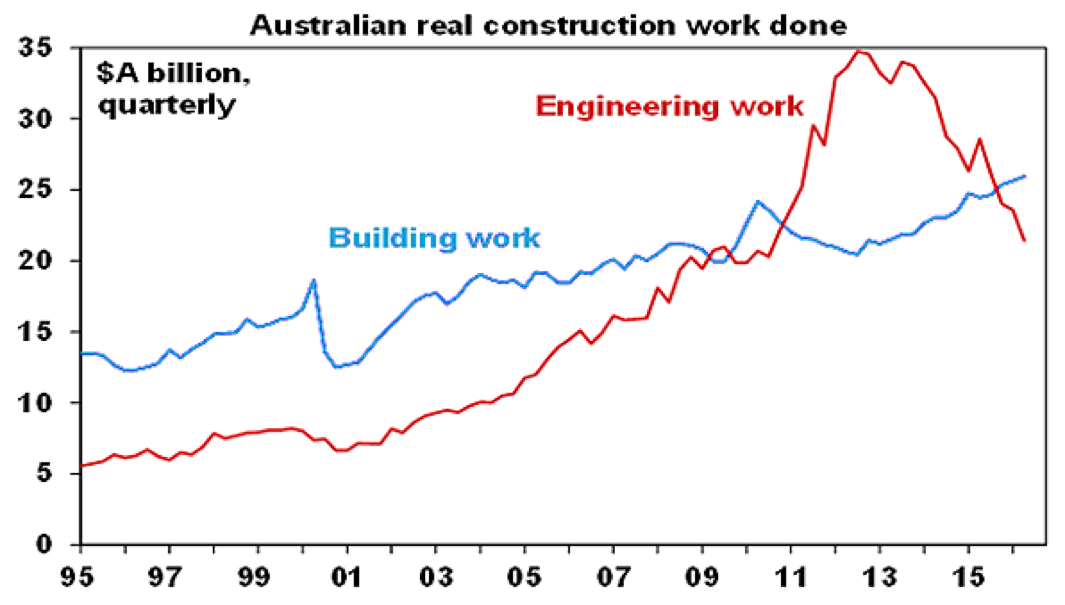 Fourth, public infrastructure investment is ramping up strongly. This is partly driven by former Federal Treasurer Joe Hockey’s Asset Recycling Initiative that is seeing new state infrastructure spending particularly in NSW and the ACT financed from the privatisation of existing public assets. The upshot of a fading growth drag from mining investment and rising public capital spending is that it will offset the inevitable slowing in housing construction that we will see next year.
Fourth, public infrastructure investment is ramping up strongly. This is partly driven by former Federal Treasurer Joe Hockey’s Asset Recycling Initiative that is seeing new state infrastructure spending particularly in NSW and the ACT financed from the privatisation of existing public assets. The upshot of a fading growth drag from mining investment and rising public capital spending is that it will offset the inevitable slowing in housing construction that we will see next year.
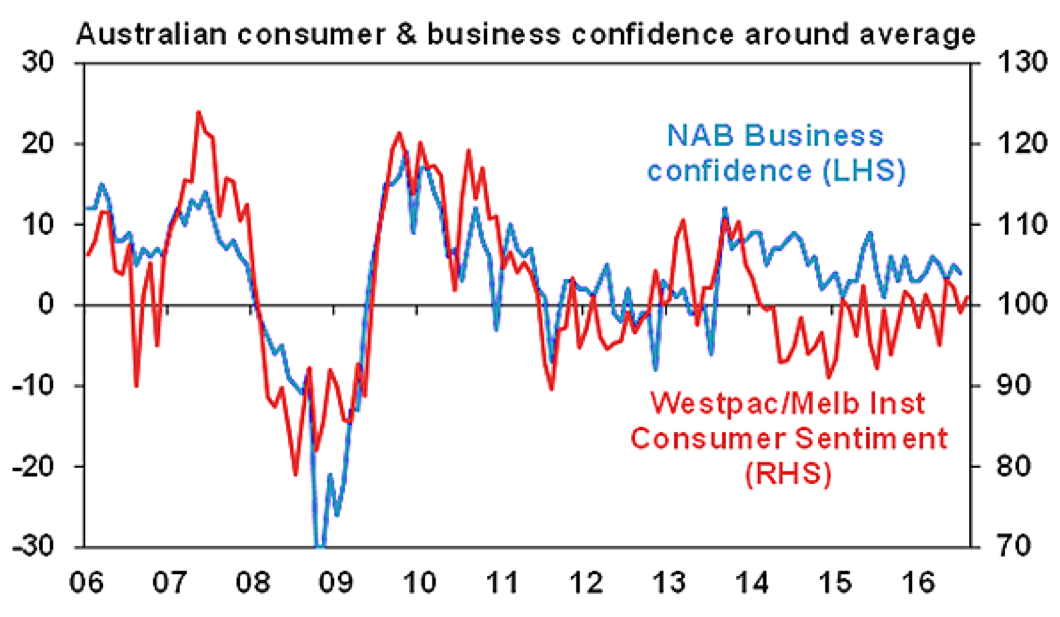 Fifth, despite all the gloom consumer and business confidence are actually around their long term averages. Would be nice to be higher but it ain’t bad.
Fifth, despite all the gloom consumer and business confidence are actually around their long term averages. Would be nice to be higher but it ain’t bad.
Source: National Australia Bank, Westpac/MI, AMP Capital
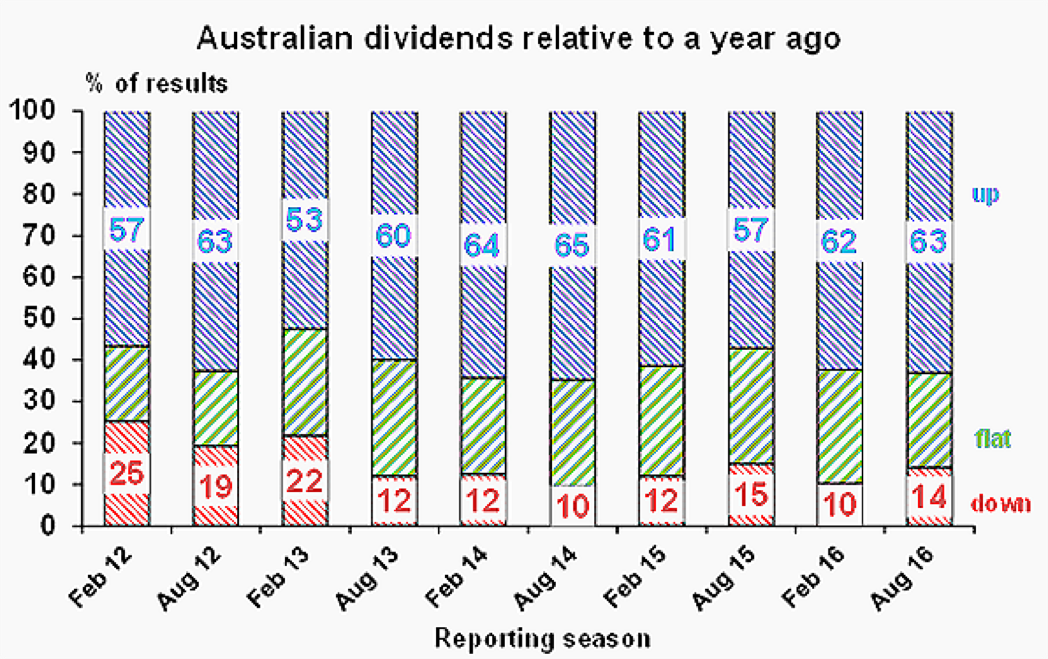
Sixth, share market profits have likely bottomed. 2015-16 was not great for listed company profits with earnings per share down around 8% driven by a 47% slump in resources profits and a 4% fall in bank profits. But it is notable that 62% of companies have seen their profits rise on a year ago and the typical or median company has seen profit growth of around 4%. 54% have seen their share price outperform the market the day results were released which suggests results haven’t been worse than expected. While aggregate dividends fell 10% mainly due to a cut in resources company dividends (which were never sustainable anyway), 86% of companies actually increased or maintained their dividends indicating that the median company is doing okay.
Source: AMP Capital
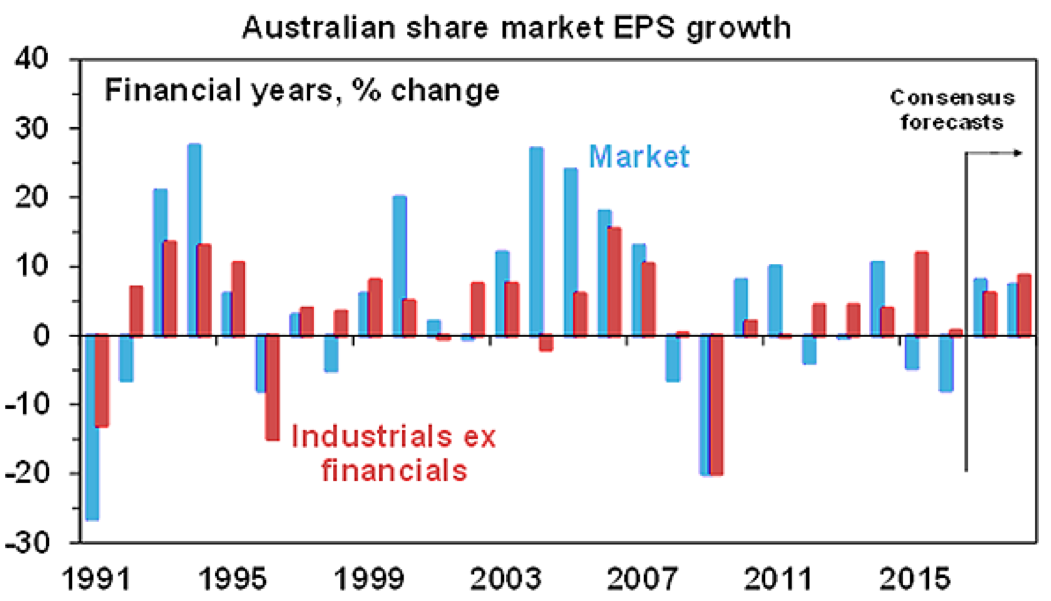
Overall profits are on track to return to growth in 2016-17 as the slump in resources profits reverses (thanks to higher commodity prices, cost and supply controls) and non-resource stocks see growth. 2016-17 earnings growth is expected to be around 8%.
Source: UBS, AMP Capital
Finally, there are lots of social reasons to be optimistic about Australia. For example, we are living longer, healthier lives – in fact we rank 4th in the world in terms of life expectancy (at 82.8 years). Our cities regularly rank amongst the world’s most liveable cities – with Sydney and Melbourne at 10 and 15 respectively according to one survey. Unlike many developed countries our population is still growing solidly and we seem to do a better job at integrating immigrants than many countries. We are not wracked by the problems of a sharp rise in inequality seen in the US and UK. Despite the usual post-Olympic whinging we outperformed all the other top 10 2016 Olympic medal winning countries with 1.2 medals per million people (with the UK being the closest at 1 and the US at just 0.4).
